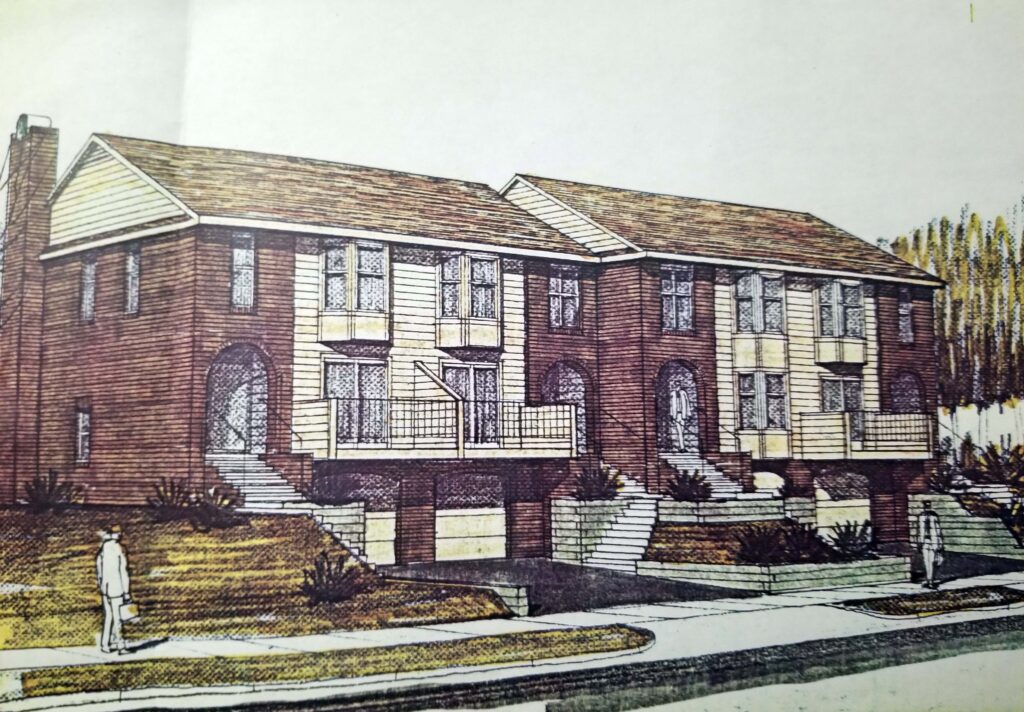In the early 70s when Douglas School was demolished, the future use of the site and the effect it would have on the surrounding area became a concern for the surrounding neighbors. The School Board wanted to sell the site – for a use supported by the neighborhood and one that would put the property back on the tax rolls. So what should be the use and who should be the developer?
Everyone felt ta residential use would be appropriate. However, selecting a developer became a major problem. The urban unrest and the fires in North Minneapolis in 1968 had caused many developers to transfer their development efforts to the suburbs. Planners and lenders were also deeply concerned about the future of the cities! The area surrounding the Douglas School site was declared to be “transitional” at best. The lenders from the Department of Housing and Urban Development (HUD) recommended a high density rental development with small units and limited rents. This was not the kind of development desired by the community. The very vocal neighborhood groups and the surrounding neighbors were strongly in favor of a low density development including home ownership. The residents of the neighborhood obviously had a much more positive opinion about their community and were adamant about their position.
A successful resolution was accomplished! Members of the Lowry Hill neighborhood group entered into an informal arrangement with me, and a local developer; the group then acquired an option to purchase the Douglas site from the school district. Next, the local banks agreed to provide project financing. Ultimately, the project consisted of 25 attached 3 level homes for home ownership. This was to be the first attached townhomes in Minneapolis – for individual home owners. In addition to the town homes, approximately 25% of the site was to be preserved as a neighborhood park space.

The development proceeded, was completed and all of the homes promptly sold. Almost fifty years later, the townhomes continue to be a very positive community asset. In spite of the risk assumed by the development group and in spite of the skepticism of HUD and many planners, the entire Lowry Hill area is a model of great success.
